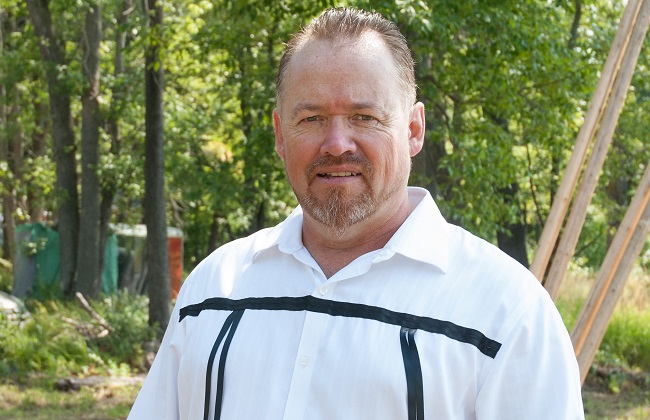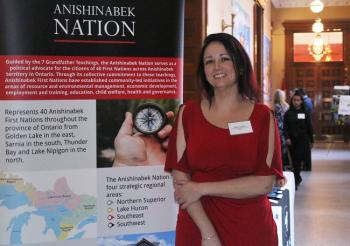Image Caption
Summary
Local Journalism Initiative Reporter
Windspeaker.com
The Anishinabek Nation has announced it is working on new online treaty education resources which will be available next spring.
The announcement was made on Monday, which kicked off Treaties Recognition Week.
Held during the first week of November, Treaties Recognition Week, first staged in 2016, recognizes the importance of treaties, treaty rights and relationships and was initiated in response to the Truth and Reconciliation Commission’s Calls to Action to increase treaty awareness.
The Anishinabek Nation claims to be the oldest political organization in Ontario, with roots dating back to the Confederacy of Three Fires which existed before European contact in the territory. It is an advocate organization for 39 First Nations across the province.
For the past half dozen years, the Anishinabek Nation has been distributing its ‘We are all Treaty People’ lesson kits to schools throughout Ontario, with almost 4,000 of these kits utilized in classrooms across the province.
“We’re going on a whole learning journey if you will,” said Kelly Crawford, a treaty educator working on the project. “We’re going to be taking the treaty kits and making them into virtual worlds and virtual reality as well.”
Crawford said that for the online resources, avatars will be created for various language keepers, knowledge keepers, Elders and leaders.
Teachers and their students will then be able to explore six virtual worlds with videos on various topics, including worldviews, wampum belts and treaties in Ontario.
Virtual reality viewers will also be available to provide 360-degree views.
“We’re pretty excited,” Crawford said of the work being developed. “We’re hoping to get all of this work done for the spring.”
Materials will then be available to be utilized starting with the 2021-22 school year.
Marci Becking, Anishinabek Nation’s senior communication officer, said the feedback on the existing resource materials has been positive.
“The school boards have been really responsive to our products and our resources,” Becking said. “They really like that it comes from a good place and are really grateful that we provided this.”
Becking believes the learning resources being worked on will also be well received.
“We will open it up to whoever will purchase a license for all of their schools,” she said. “That’s how it will be set up. All of the boards have participated in our resources now. I can only assume they’ll participate in this.”
And they will be unique.
“Because of the pandemic, a lot of students are learning online especially in southern Ontario,” Becking said. “There aren’t a lot of resources for teachers right now for online learning. So, this will be a first. I don’t know of any other treaty education resources that will be a virtual resource like this.”
Crawford believes it is vital to get these resources to school-aged children as it will help in terms of reconciliation.
“I think it’s extremely important,” she said. “What I can tell you going into the schools and working with the teachers for the most part there’s kind of like a fear because they didn’t have this content as part of their own experience.”
Crawford added it doesn’t take long for individuals to start being educated.
“By starting the discussion, you’re seeing students wanting to advocate,” she said. “And you’re seeing those relationships start to change. Oftentimes when I go into classrooms there’s no knowledge base in relation to a lot of these things. And I think it’s just building that relationship and having an understanding.”

Nipissing First Nation Chief Scott McLeod believes the learning resources being developed can help spark some changes in Indigenous issues.
“Once we educate the public, things start to change,” he said. “It starts to create more pressure on political will to do things.”
As an example, McLeod said people did not know what had happened with residential schools in Canada until awareness was raised.
“It started to create a lot of pressure on government to move towards reconciliation and correcting a lot of wrongs that were done in the past,” he said.
McLeod believes the treaty education resources can also be used positively and create plenty of awareness.
“The big Canadian political machine does not work to address things like this until the fuel, which is the people of this country, start to get educated on the truth,” McLeod said.
And that can start in classrooms, or wherever online education takes place.
“None of this will move forward and Indigenous issues will not get the attention they deserve until the average person in this country starts realizing what is happening and what has happened,” he said. “That’s the basis for a lot of this.”
Anishinabek Nation Grand Council Chief Glen Hare also believes further developing existing learning resources can only be a plus.
“We’ve been saying for years that treaty education (and) public education will help eliminate racism,” Hare said. “We’re supporting teachers and students by making our treaty kits into online resources so that they can still learn about First Nations and the treaty relationship while at home or in the classroom.”

